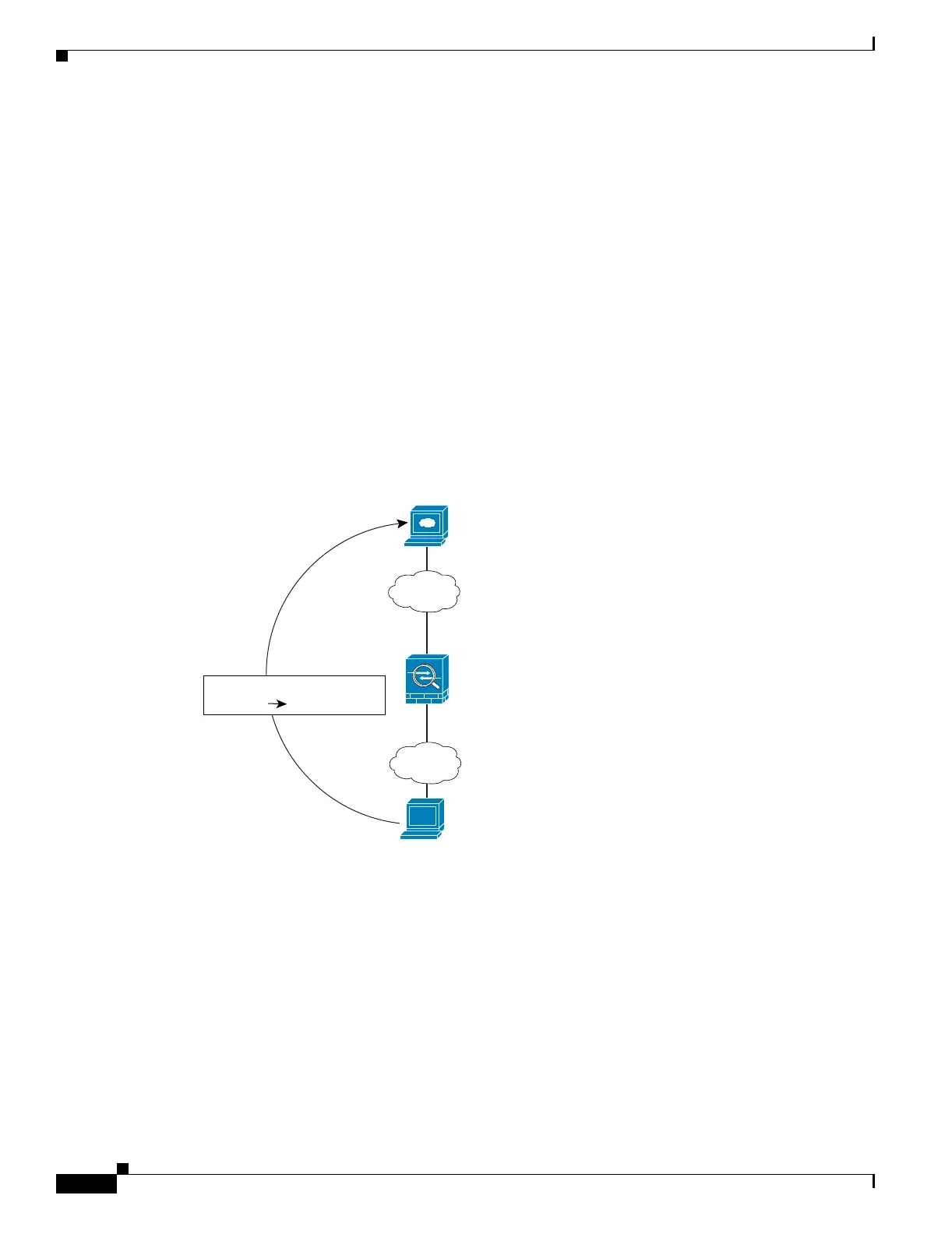17-16
Cisco Security Appliance Command Line Configuration Guide
OL-10088-01
Chapter 17 Applying NAT
Using Dynamic NAT and PAT
Using Dynamic NAT and PAT
This section describes how to configure dynamic NAT and PAT, and includes the following topics:
• Dynamic NAT and PAT Implementation, page 17-16
• Configuring Dynamic NAT or PAT, page 17-22
Dynamic NAT and PAT Implementation
For dynamic NAT and PAT, you first configure a nat command identifying the real addresses on a given
interface that you want to translate. Then you configure a separate global command to specify the
mapped addresses when exiting another interface (in the case of PAT, this is one address). Each nat
command matches a global command by comparing the NAT ID, a number that you assign to each
command (see Figure 17-13).
Figure 17-13 nat and global ID Matching
See the following commands for this example:
hostname(config)# nat (inside) 1 10.1.2.0 255.255.255.0
hostname(config)# global (outside) 1 209.165.201.3-209.165.201.10
130027
Web Server:
www.cisco.com
Outside
Inside
Global 1: 209.165.201.3-
209.165.201.10
NAT 1: 10.1.2.0/24
10.1.2.27
Translation
209.165.201.310.1.2.27

